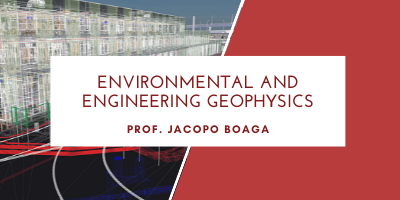Environmental and Engineering Geophysics

Period: First Semester
Course Unit Contents:
The course has 2 parts:
Part 1: Introduction to exploration geophysics
General concepts of applied geophysics will be introduced:
-physical principles of electrical, electro-magnetic, and seismic method
-concepts of resolution and investigation
-definition of geophysical probem, forward and inverse models
- acquisition principles of the geophysical method presented.
Parte 2: Exploration methods for environmental aims.
The discussed methods will be:
- geoelectric (traditional and tomography), with particular focus on subsoil hydrological application
- induced polarization methods for the contaminant characterization
- low frequency induced electro-magnetic methods for the characterization of polluted site and the exploration of the shallower subsoil
- high frequency ground penetrating radar for the exploration of the near surface
- high resolution seismic for stratigraphic studies, from shallow to hundreds meters depth of exploration.
- refraction seismic and surface wave analysis for engineering and geotechnical applications
- seismic, electric and radar methods in boreholes
- borehole geophysics logs
The course will focus on applied aspects of the several techniques with examples from literature and from Teacher experiences. The methods will be compared in terms of limits and goals, in order to drive the most suitable choice of investigation case by case
Planned learning activities and teaching methods: Frontal lessons. Laboratory exercises and fields experiences.
In addition to contacting the course instructor, students with disabilities, Specific Learning Disorders (SLD), Special Educational Needs (SEN), and other health conditions can reach out to the Student Services Office - Inclusion Unit to receive more information about opportunities to access teaching with specific support and tools.
